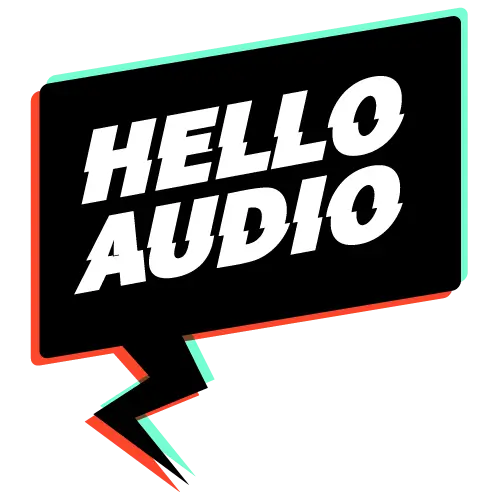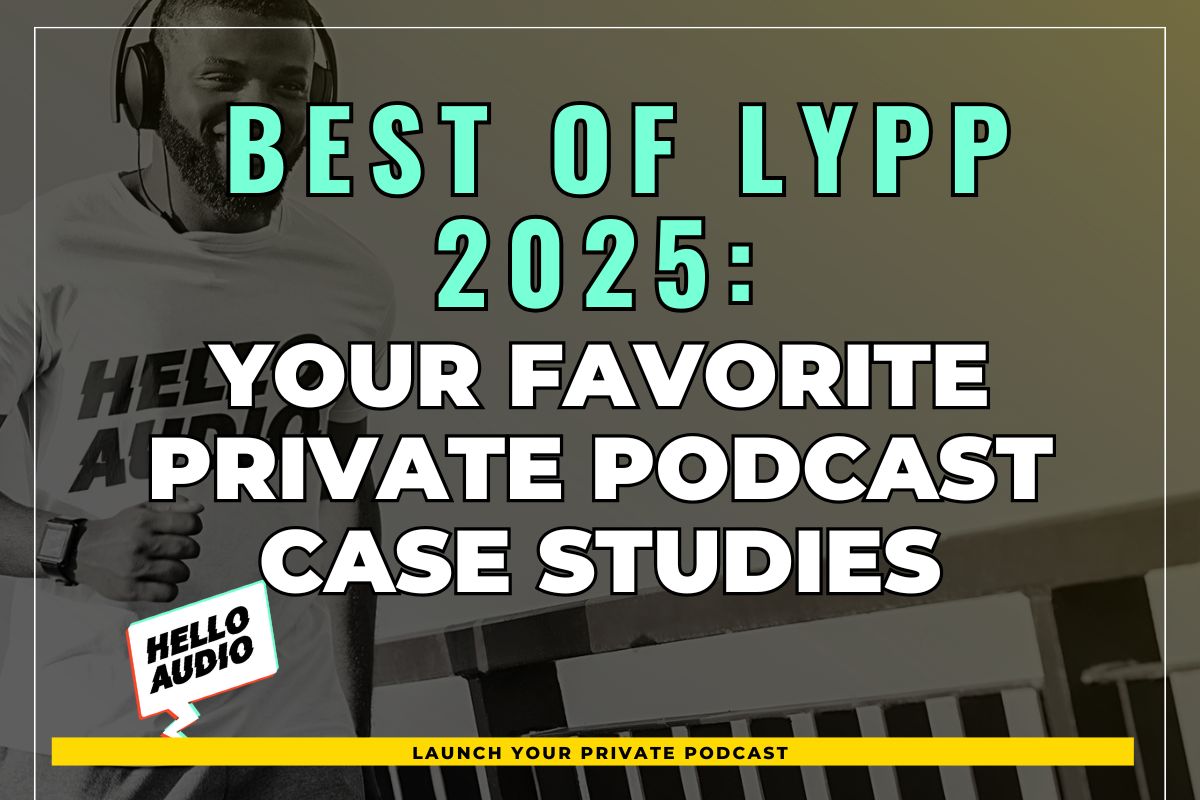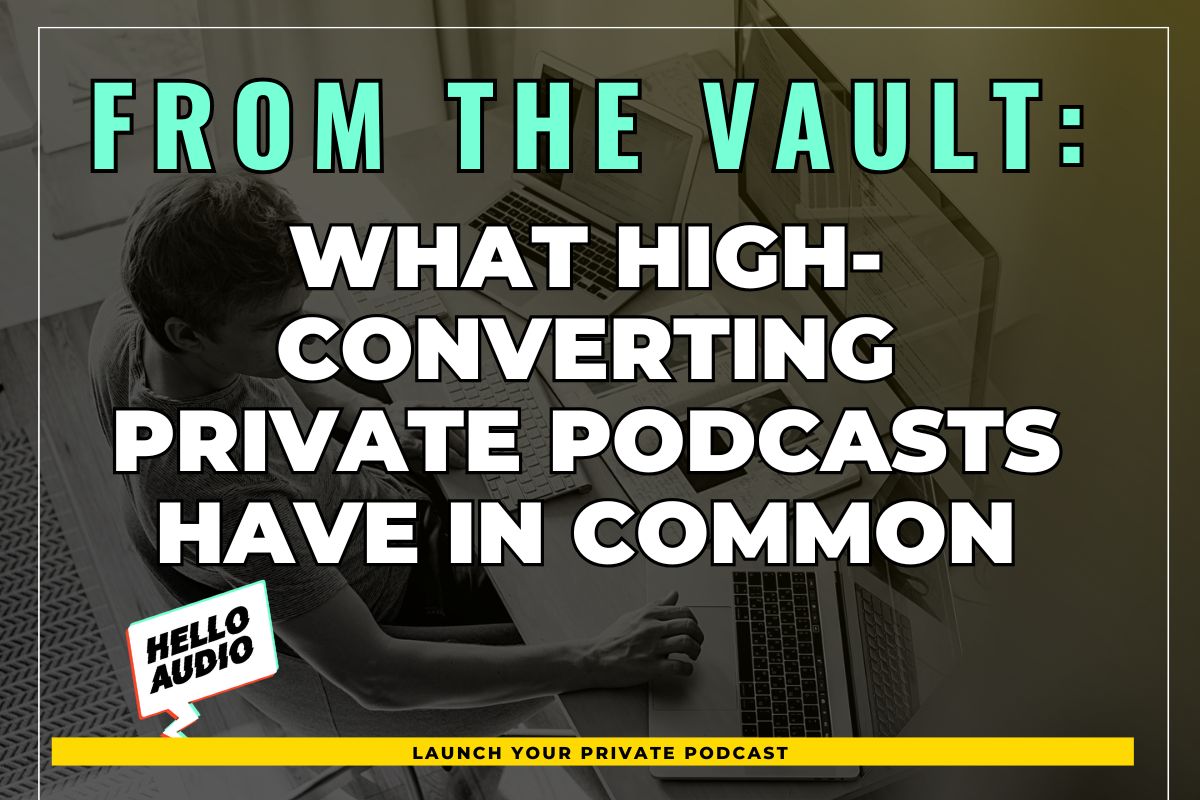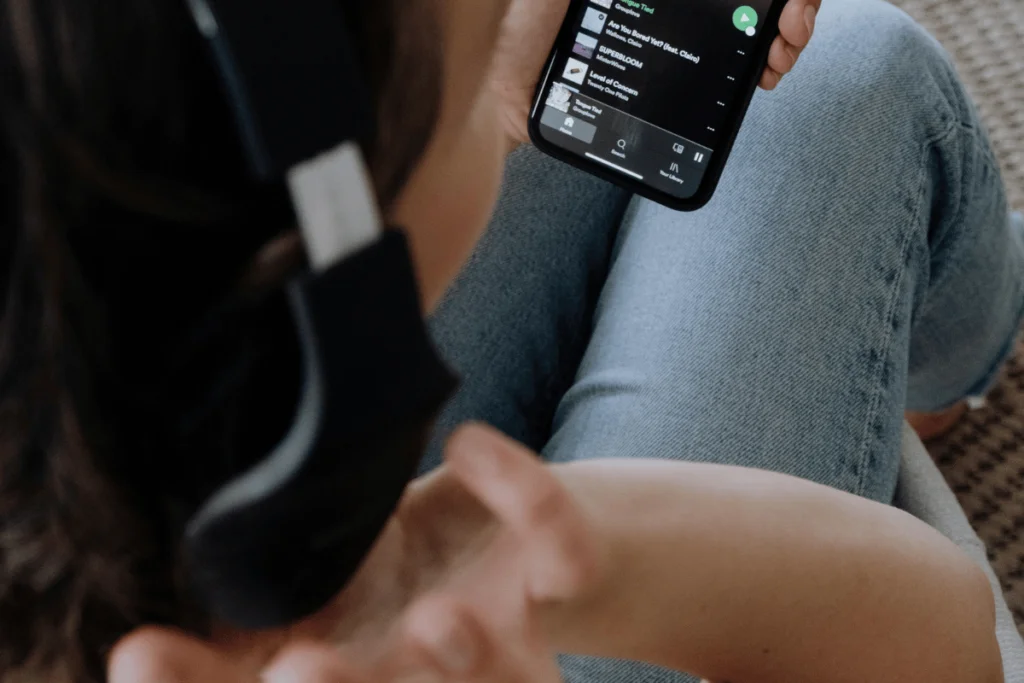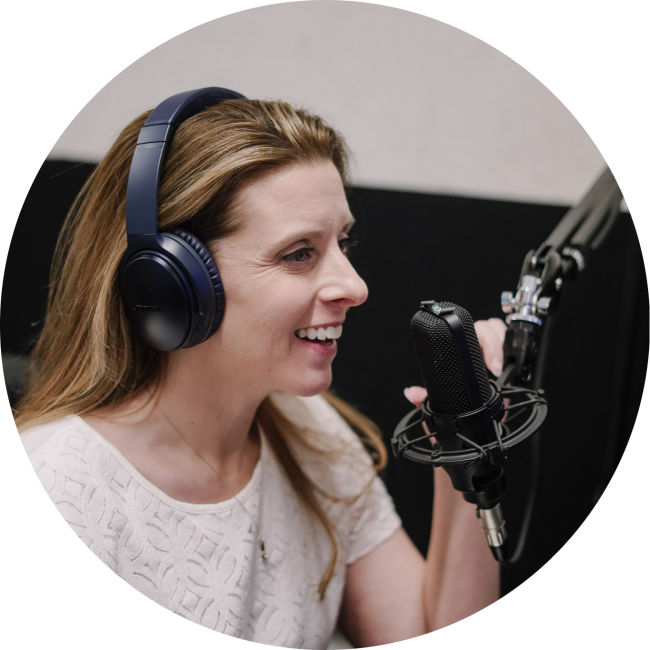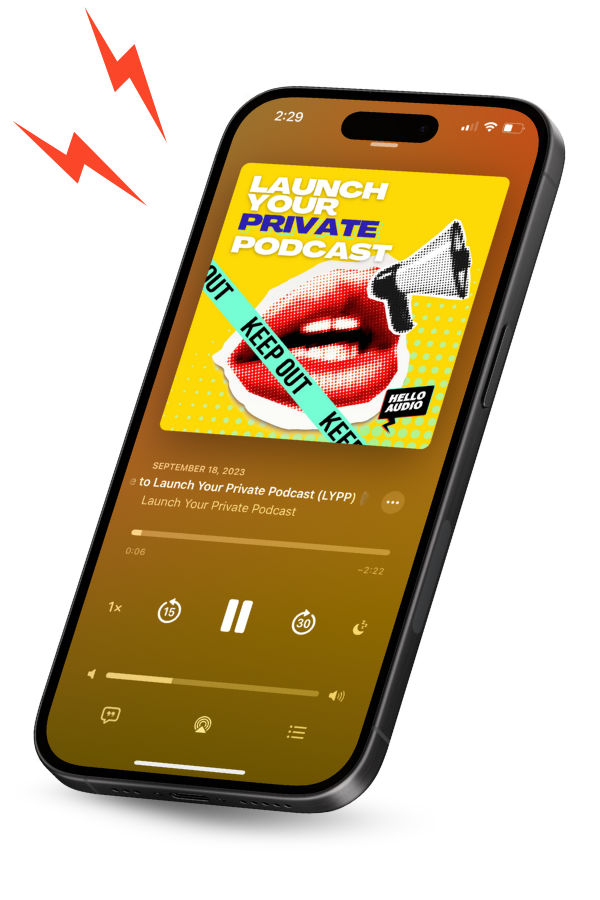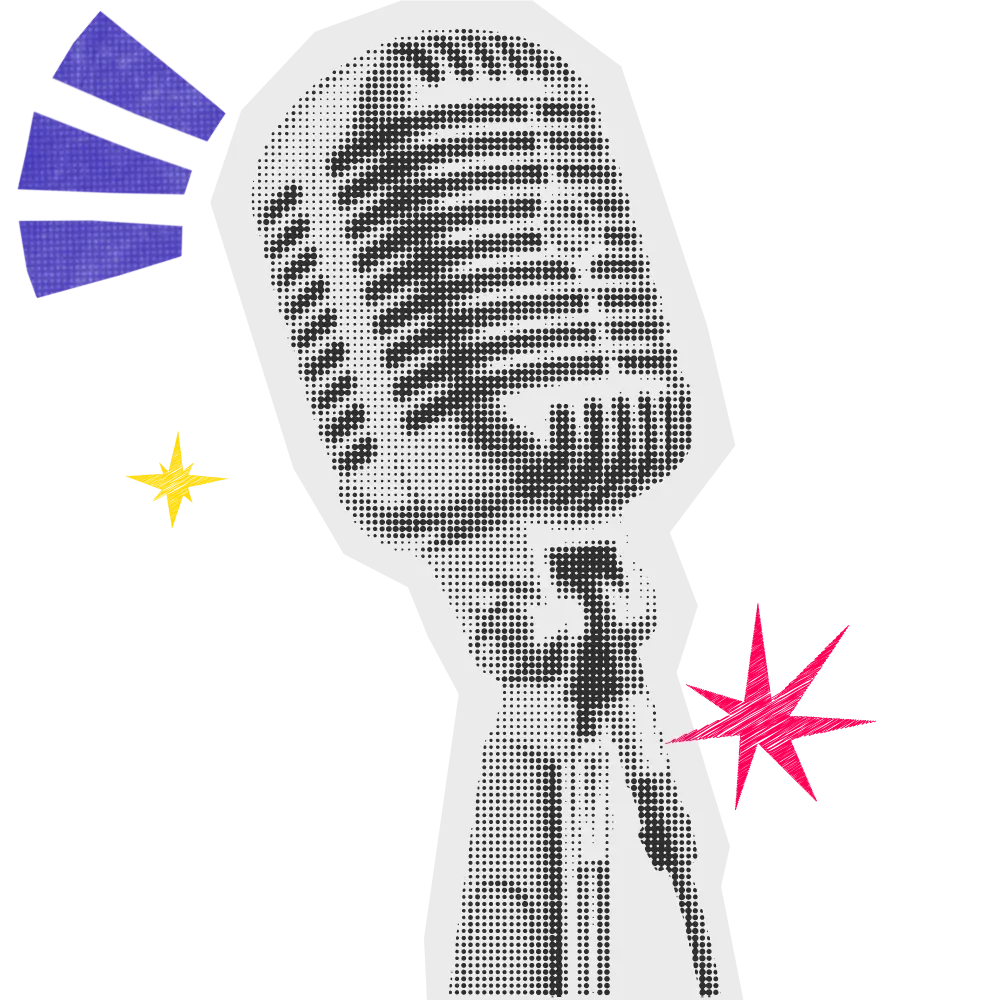Most movie lovers understand how much the blurb you read on your Netflix matters when deciding to watch something new.
A podcast description works similarly. It piques your listeners’ curiosity and encourages them to play your podcast.
But that’s easier said than done.
Today, we’ll explore how to craft podcast descriptions that get your listeners to hit play and subscribe. We’ll also share some of the best examples that entice listeners.
TL;DR – How to Write a Podcast Description in 5 Steps
Wondering how to summarize a podcast?
Here’s a quick rundown of 5 steps to help you nail your description.
- Understand your audience
- Incorporate a hook or a teaser
- Introduce yourself and show
- Add a strong call-to-action (CTA)
- Proofread and refine it
An extra tip: Writing a captivating podcast is just the beginning!
You’ll need a reliable platform to create, host, and manage your podcasts.
Hello Audio allows you to create private podcasts by repurposing your existing video and audio content. Our platform then publishes those private audio podcast feeds directly into dozens of platforms, including Google Podcasts, Spotify, and others.
Want to give it a shot?
Try our 7-day free trial — no credit card required.

What is a Podcast Description?
A podcast description or summary gives listeners enough details about your show to make them want to press play on your podcast. A description should be interesting to draw in listeners but also short and to the point.
It might include:
- Who your hosts (or guests) are
- Main points you tackle on your show
- Other information that relates to your podcast
Keep reading to hear the ins and outs of an excellent description for a podcast in the next section!
What Makes a Great Podcast Description?
Writing your show description requires thought.
Here are four tips to make your podcast summary pop:
- Make every word count: A great description is clear, engaging, and concise without using complex language and many words. So, pack a lot of value in a few words to give your listeners a clear idea of what to expect and capture their attention quickly.
- Feature at least one CTA: You should mention your social media handles or link to your site. Alternatively, encourage people to subscribe to your show.
- Keep it short: You only have a few seconds to grab your audience’s attention, so limit your descriptions to 50 to 150 words — three to four sentences max.
- Use keywords for SEO: You should strategically place relevant keywords to make your podcast discoverable and rank higher on search results.
Your potential audience can easily find you on Google and podcast platforms.
Weave these elements together to create an engaging podcast summary.

Podcast Description vs. Podcast Episode Description
These two are summaries, but they have different meanings.
So, do you know which is which?
- A podcast description summarises your podcast show as a whole.
- A podcast episode description is a roundup of the key takeaways of each episode.
At the very least, your episode description should include the podcast intro (with a hook), the guest bio, the topics covered, clear CTAS (and links) to you and the guest’s socials, and affiliate links.
Now that we’ve got the out of the way, it’s time to think about how to write a good podcast description.
How Long Should a Podcast Description Be?
While there’s no perfect length, most top shows have podcast descriptions that are 50 to 150 words long. This length attracts new listeners, gets shared, and fits as meta descriptions in search engines.
However, the ideal length might vary based on the theme and topic of your show.

How to Write a Podcast Description
You’ve invited guests, recorded the podcast content, and edited and mixed your video (and audio).
Still, you’re faced with one challenge – summarizing your podcast.
Let’s talk about the five steps you should take:
1. Understand Your Audience
Before writing your description, you should know who you want to appeal to.
In this step, you should:
- Understand your audience demographics, including their age, lifestyle, beliefs, interests, and pain points
- Review shows in your niche to see how they target their clients
Once you identify your ideal listeners, you can craft a description specifically for them.
For example, if you’re targeting young adults, write an informal podcast summary.
2. Incorporate a Hook or a Teaser
In a sentence or two, highlight the intriguing part of your podcast to create anticipation and encourage your audience to listen to your show.
Keep these tips in mind:
- Use a thought-provoking question related to your content
- Use an anecdote or a surprising twist to spark engagement
- Share an interview snippet or highlight critical moments to create interest
The hook should intrigue your listeners but leave them wanting to learn more.
3. Introduce Yourself and Your Show
At this stage, tell your listeners who you are and what your podcast is about.
Quick points to remember here are:
- Briefly incorporate your show’s title
- Mention your podcast format, whether solo, interview, narrative, Q&A, or roundtable show
- Focus on the standout feature of your show
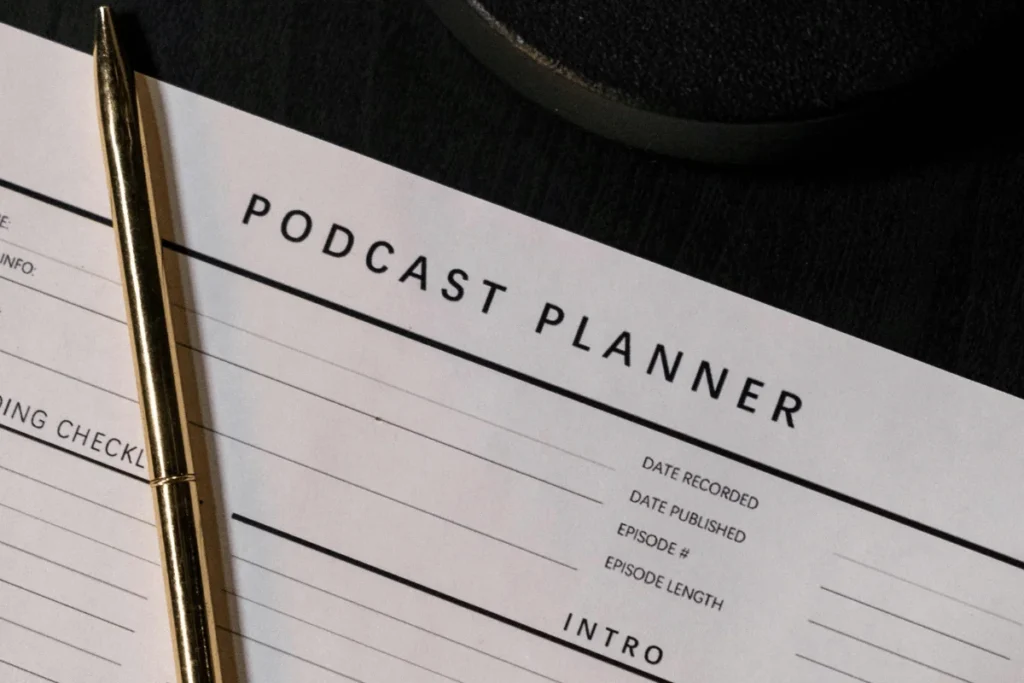
4. Add a Strong Call-to-Action (CTA)
Once your audience engages with the description, you should add a call to action to engage your listeners further.
Some quick tips to remember are:
- Communicate when you’ll release new episodes, like ‘Check back every Thursday for a new episode.’
- Tell your audience what to do next, like ‘Subscribe.’
- Ask your audience to follow you on social channels and join your online community groups.
5. Proofread and Refine It
Don’t expect to write the perfect description right off the bat. You might have to cut the fluff, like removing filler words to make every word count.
A few tips to remember here are:
- Read your description aloud to review for clarity and catch awkward phrasing
- Ensure your descriptions are error-free and easy to read
- Check for spelling and grammar errors.
Tip: With Hello Audio, you can generate great private podcasts in minutes from existing video and audio content. Our platform also allows you to add auto-transcripts and a podcast description.
Watch our demo and learn how to create the perfect private podcast.
4 Podcast Description Examples to Inspire You
Want examples to inspire you to write your own?
Let’s explore these four world-class shows with exciting podcast descriptions:
1. The Joe Rogan Experience
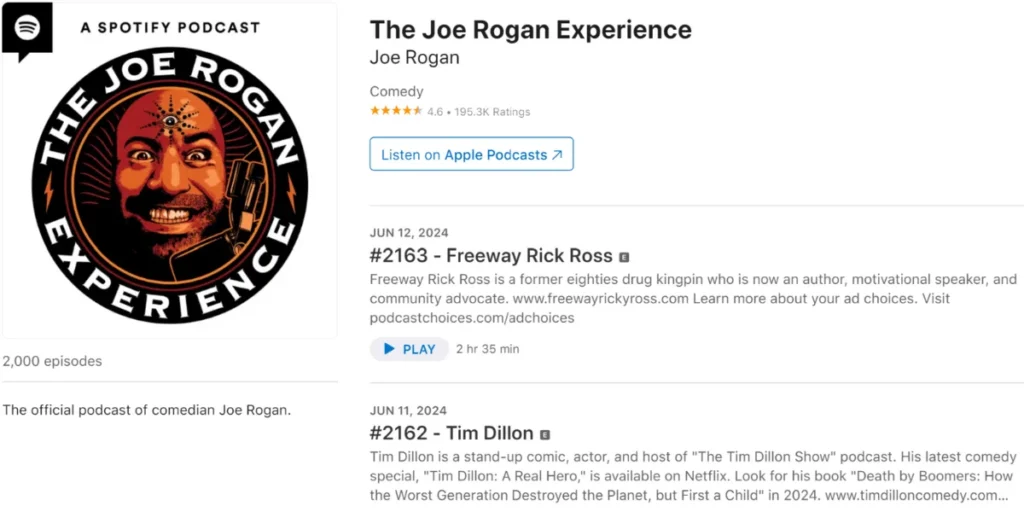
Ranking among the top five podcasts in the world, The Joe Rogan Experience (popularly known as JRE) only needs a little introduction to its fans.
JRE is a short and concise podcast bio example with only seven words.
2. The Daily
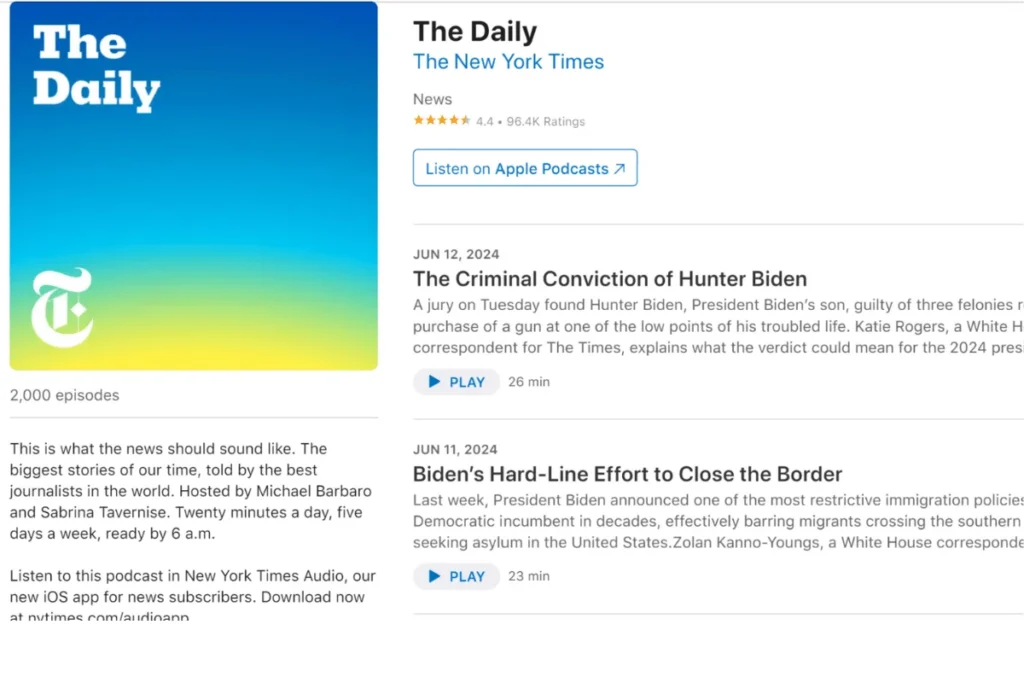
One way The Daily continues to attract millions of listeners and expand the audience of The New York Times brand is through its concise description.
It tells the listeners the purpose of the show, introduces the two hosts’ names, and states the podcast release schedule.
3. The Diary of a CEO
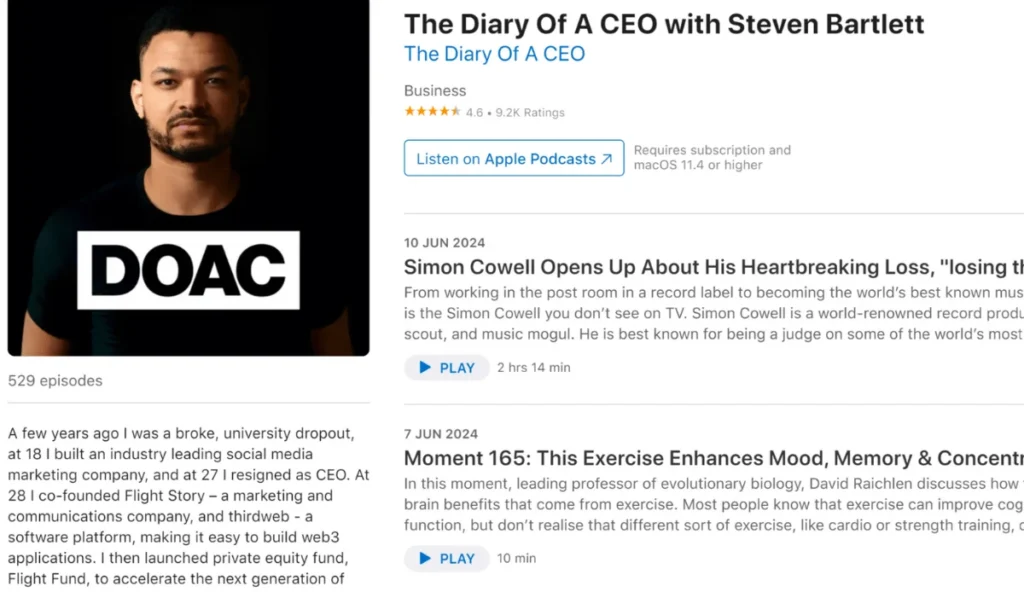
The Diary of a CEO (the DOAC) is an excellent example of a podcast summary. The description provides a beautiful context for the host, Steven Bartlett, and briefly mentions the two companies he founded — Flight Story and Thirdweb.
Lastly, it ends by telling the listeners what to expect while including various CTAs on the host’s social media channels.
4. Stuff You Should Know
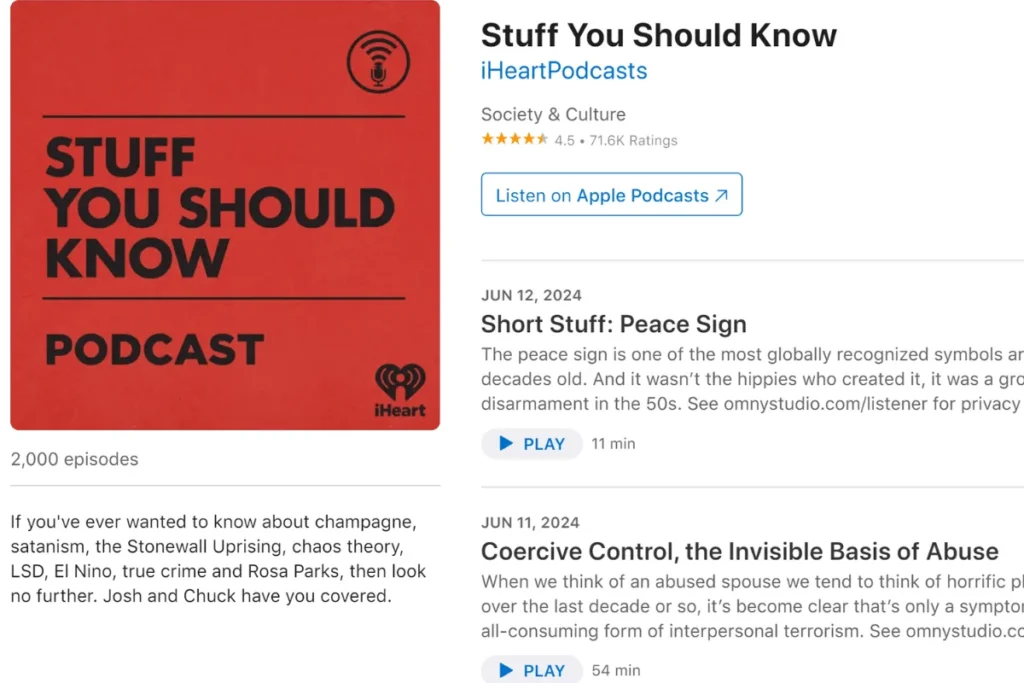
The podcast summary of the Stuff You Should Know podcast is short and straightforward.
It addresses the target audience (curious fans) and then states the two hosts.
Frequently Asked Questions (FAQs)
Check all the common questions about podcast descriptions, which we’ve answered in our FAQ section below.
What is the Difference Between a Podcast Description and Podcast Show Notes?
As discussed above, your podcast description summarizes what your listeners should expect from your entire podcast show. It will likely stay the same throughout the episodes.
In contrast, show notes are more detailed and longer than descriptions. They provide information about each episode, such as podcast sponsors, episode title, episode number, the key topics to cover, timestamps, and relevant links mentioned in the episode.
Some can also include biographies to foster a stronger connection with your audience.
Can I Use the Same Description Across Different Platforms?
Yes!
You can use the same description on your profile across various listening platforms, including Stitcher, Google, and Apple Podcasts.
Your podcast description is one of the things new listeners see. It’s displayed on the top page, next to your latest episodes.
Should I Include Links in my Podcast Description?
Absolutely!
You should include links to solidify connections on other platforms, such as your website, social media platforms, or YouTube channel. You can also use links as CTAs and prompt the readers to take action.
Conclusion
We hope you’re inspired to create (or revise) your podcast summary.
First, research your target audience and create a teaser. Next, introduce yourself and the show, and incorporate a strong CTA. Lastly, edit your description and polish it up.
Once your description is ready, you can host and publish your private podcasts using Hello Audio.
Our platform offers automated actions based on your listeners’ actions and advanced analytics for each episode.
Ready to launch your private podcasts with us? Sign up for Hello Audio’s 7-day trial.

